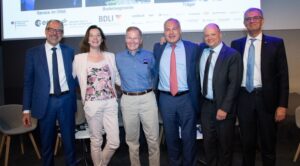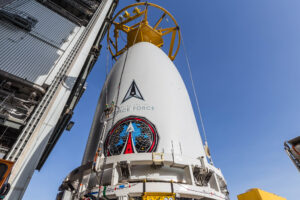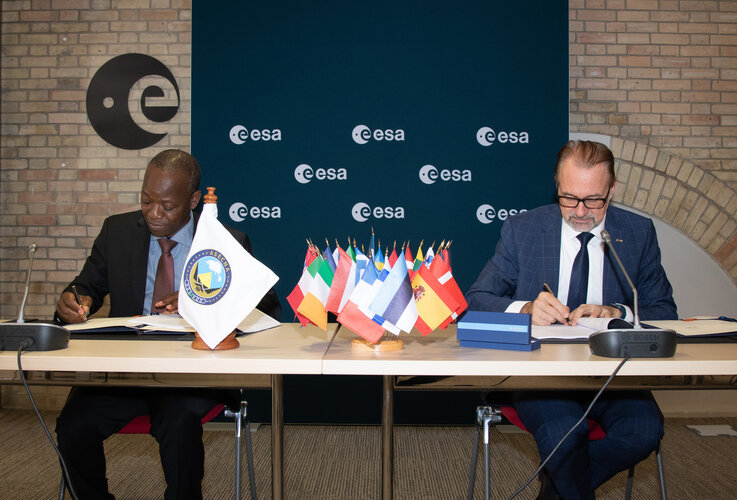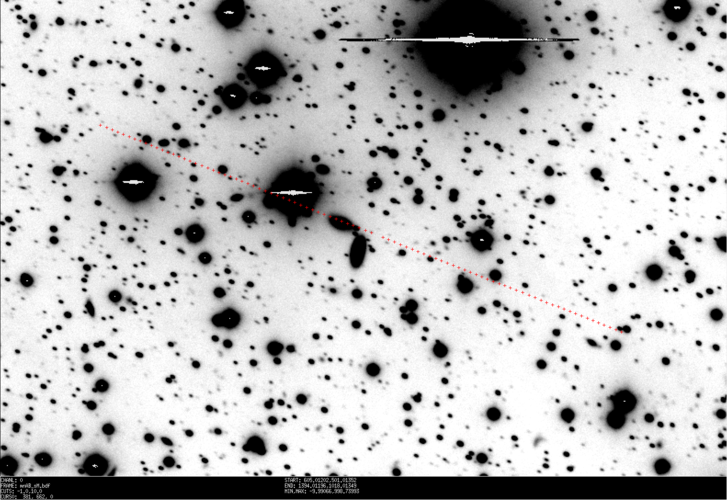SpaceX launches SES-22 C-band replacement satellite
Wednesday, 29 June 2022 20:50
SpaceX launched the first television broadcast satellite under SES’s C-band clearing plan June 29 from Cape Canaveral in Florida.
The post SpaceX launches SES-22 C-band replacement satellite appeared first on SpaceNews.
Webb telescope: NASA to reveal deepest image ever taken of universe
Wednesday, 29 June 2022 20:09
NASA administrator Bill Nelson said Wednesday the agency will reveal the "deepest image of our universe that has ever been taken" on July 12, thanks to the newly operational James Webb Space Telescope.
"If you think about that, this is farther than humanity has ever looked before," Nelson said during a press briefing at the Space Telescope Science Institute in Baltimore, the operations center for the $10 billion observatory that was launched in December last year and is now orbiting the Sun a million miles (1.5 million kilometers) away from Earth.
NASA administrator tests positive for COVID
Wednesday, 29 June 2022 19:48
NASA Administrator Bill Nelson has tested positive for COVID-19, he announced June 29, but is continuing to lead the agency as he isolates at home.
The post NASA administrator tests positive for COVID appeared first on SpaceNews.
Space Force considering strategy for procuring national security launch services
Wednesday, 29 June 2022 18:36
Space Force acquisition executive Frank Calvelli said he would be open to a different model than the current two-vendor approach for national security launch services procurement
The post Space Force considering strategy for procuring national security launch services appeared first on SpaceNews.
Escaping Gravity and the struggle to reshape NASA
Wednesday, 29 June 2022 18:08
Former NASA deputy administrator Lori Garver has written a book about her time at the agency. Rand Simberg reviews the book with a focus on Garver’s efforts to put NASA on a new course that leveraged commercial capabilities.
NASA mission aims to study ice and water on the moon's surface
Wednesday, 29 June 2022 15:00
In the fall of 2023, a U.S. rover will land at the south pole of the moon. Its mission: to explore the water ice that scientists know lurks within the lunar shadows, and which they believe could help sustain humans who may one day explore the moon or use it as a launching pad for more distant space exploration.
NASA recently selected Kevin Lewis, an associate professor in the Krieger School's Department of Earth and Planetary Sciences who has also worked on missions on Mars, as a co-investigator of the mission. Using part of the rover's navigational system, he plans to explore the moon's subsurface geology from his office in Olin Hall.
"I have been on other rover missions, but on Mars, so I'm a little bit new to the moon," Lewis said. "We're going to see into shadows that have never seen the sun, let alone been seen by humans. So it could be a very different type of surface than we've seen in other photos of the surface of the moon."
Drier than a desert
EGNOS technology for Africa – ESA signs deal with ASECNA
Wednesday, 29 June 2022 14:10
European technology that allows satellite navigation signals to safely guide aircraft down for landing in the majority of Europe’s airports will now be put to use across Africa and the Indian Ocean. ASECNA, the Agency for Air Navigation Safety in Africa and Madagascar, and ESA today signed an agreement to deploy a Satellite-based Augmentation System (SBAS) across a service region of more than 16.5 million sq. km, one and a half times the size of Europe’s coverage area.
Avio gets pandemic recovery funds to develop launchers for the 2030s
Wednesday, 29 June 2022 13:38
Italian rocket maker Avio secured 340 million euros ($358 million) in government funding June 29 to develop launch vehicles for the next decade.
The post Avio gets pandemic recovery funds to develop launchers for the 2030s appeared first on SpaceNews.
Swarm of tiny swimming robots could look for life on distant worlds
Wednesday, 29 June 2022 13:05
Someday, a swarm of cellphone-size robots could whisk through the water beneath the miles-thick icy shell of Jupiter's moon Europa or Saturn's moon Enceladus, looking for signs of alien life.
Sierra Space signs agreement with Turkish Space Agency
Wednesday, 29 June 2022 12:00
Sierra Space announced an agreement with the Turkish Space Agency and an affiliated company June 29 that could lead to cooperation on human spaceflight and lunar missions.
The post Sierra Space signs agreement with Turkish Space Agency appeared first on SpaceNews.
One ESA: an interactive journey around ESA sites!
Wednesday, 29 June 2022 06:35
We are a huge organisation of 5000+ people operating at nine different locations. How do we work together to achieve our goals and fly our missions?
Impact in 2052 ruled out as ESA counts down to Asteroid Day
Wednesday, 29 June 2022 06:00
Contract secures design for ESA's FORUM satellite
Wednesday, 29 June 2022 05:30 ESA has awarded a contract worth 160 million euro to Airbus in the UK to build the Earth Explorer FORUM satellite. This exciting new mission will yield unique insight into the planet's radiation budget and how it is controlled - thereby filling in a critical missing piece of the climate jigsaw.
Short for Far-infrared Outgoing Radiation Understanding and Monitoring, FORUM is ESA's ninth Ear
ESA has awarded a contract worth 160 million euro to Airbus in the UK to build the Earth Explorer FORUM satellite. This exciting new mission will yield unique insight into the planet's radiation budget and how it is controlled - thereby filling in a critical missing piece of the climate jigsaw.
Short for Far-infrared Outgoing Radiation Understanding and Monitoring, FORUM is ESA's ninth Ear Tough new robots will aim to think and act for themselves on Earth and beyond
Wednesday, 29 June 2022 05:30 A new generation of smart robots is being developed at The University of Manchester as part of an ambitious R and D programme to help the UK maintain its leadership in automatation technologies,
These new AI-powered machines will be designed to think and act for themselves in some of the most hazardous and toughest places on Earth - and beyond. These robots will be challenged to carry out
A new generation of smart robots is being developed at The University of Manchester as part of an ambitious R and D programme to help the UK maintain its leadership in automatation technologies,
These new AI-powered machines will be designed to think and act for themselves in some of the most hazardous and toughest places on Earth - and beyond. These robots will be challenged to carry out NASA, Rocket Lab launch orbiter to help pave way for astronauts' return to moon
Wednesday, 29 June 2022 05:30 NASA's CAPSTONE mission spacecraft lifted off into space Tuesday morning on a mission to orbit the moon, moving scientists closer to returning astronauts.
The unmanned lunar orbiter took off on top of a Rocket Lab booster from New Zealand's Mahia Peninsula. The mission was originally set for Monday but was delayed to make a final systems check.
The Cislunar Autonomous Positioning
NASA's CAPSTONE mission spacecraft lifted off into space Tuesday morning on a mission to orbit the moon, moving scientists closer to returning astronauts.
The unmanned lunar orbiter took off on top of a Rocket Lab booster from New Zealand's Mahia Peninsula. The mission was originally set for Monday but was delayed to make a final systems check.
The Cislunar Autonomous Positioning 
